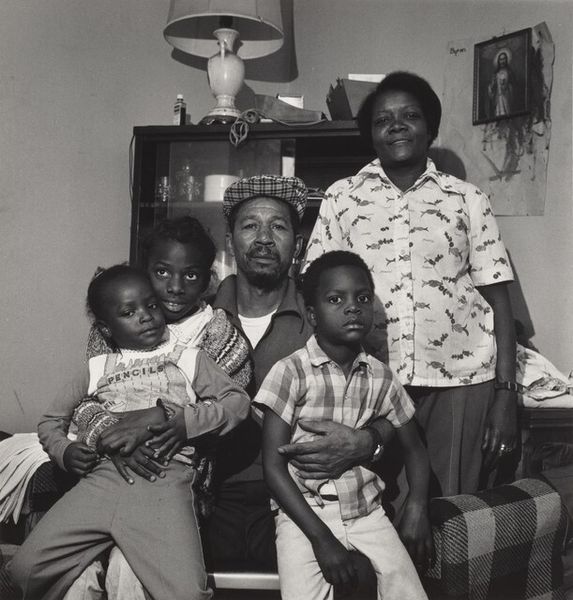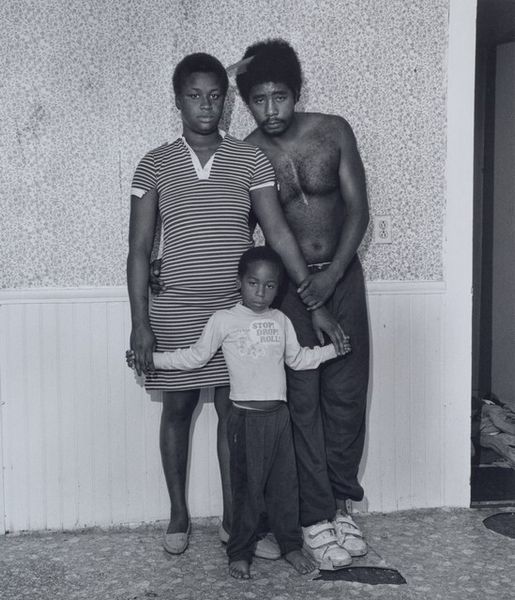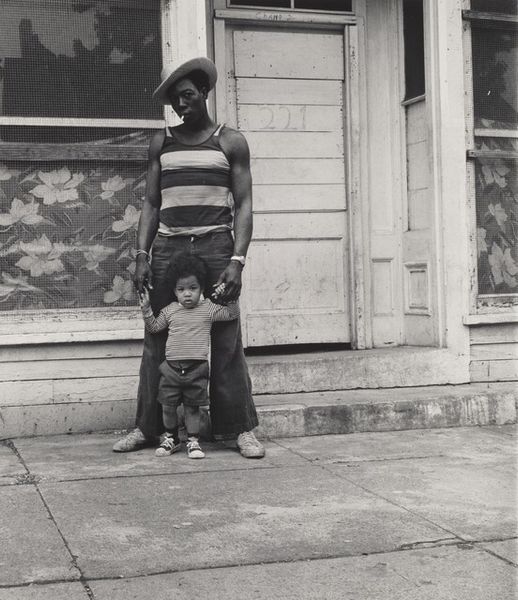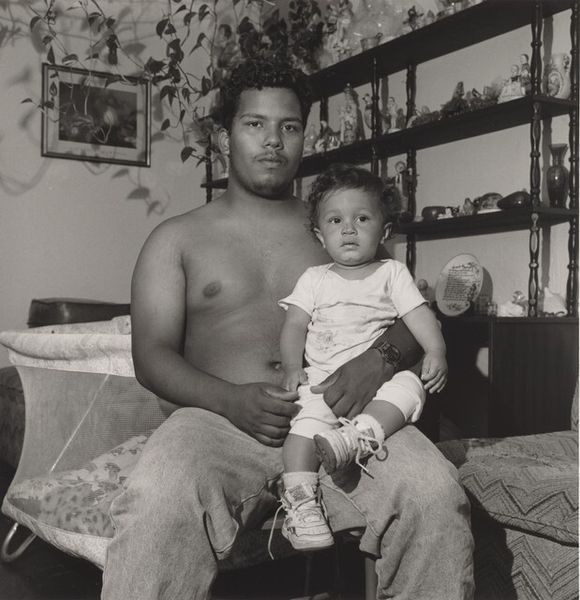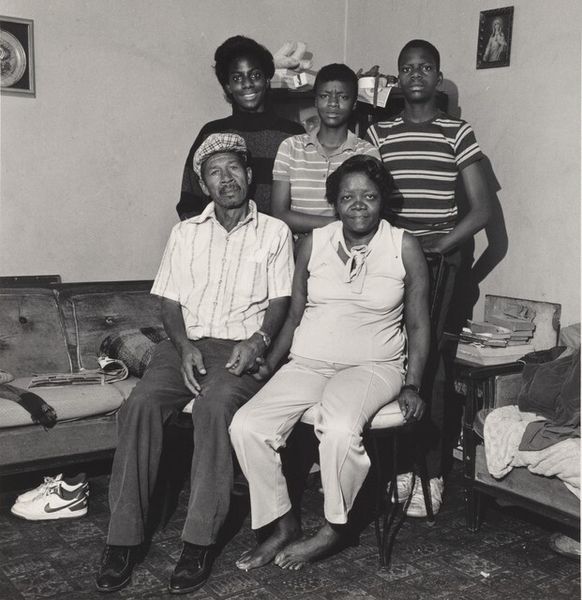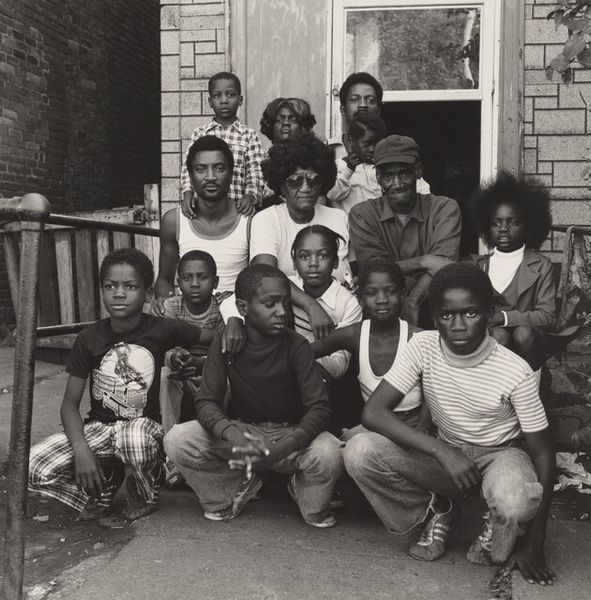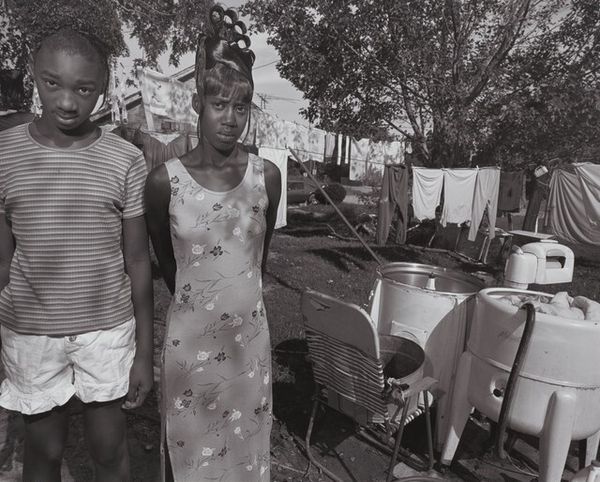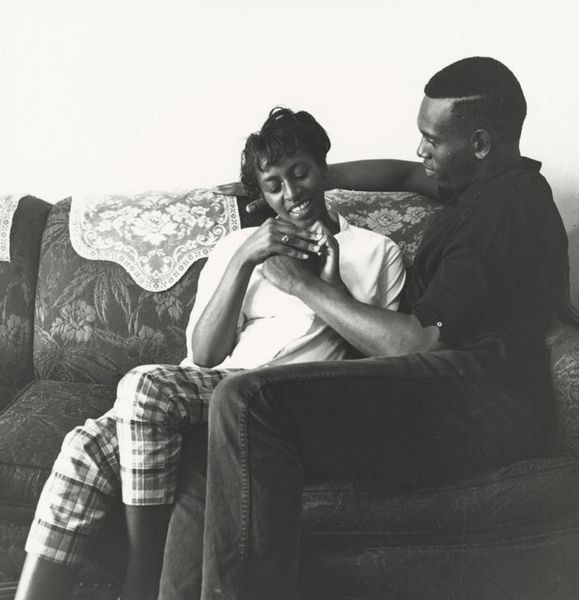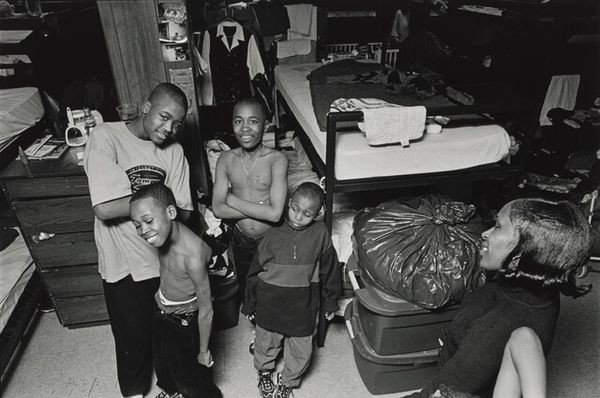
photography
#
portrait
#
social-realism
#
photography
#
ashcan-school
#
genre-painting
#
realism
Dimensions: image: 17.8 × 16.3 cm (7 × 6 7/16 in.) sheet: 25.1 × 20.3 cm (9 7/8 × 8 in.)
Copyright: National Gallery of Art: CC0 1.0
Curator: Here we have Milton Rogovin's 1992 photograph, "Seymore (Lower West Side series)." Editor: It’s a very intimate portrait. Stark, almost. The lighting casts soft shadows, highlighting the embrace of this couple. There's a deep sense of connection, yet also vulnerability. Curator: Rogovin dedicated his life to documenting working-class communities, and this image really embodies that. Think about the context in which this photo was taken; the Lower West Side in the early 90s faced numerous socio-economic challenges. Editor: Exactly. The ordinariness of the setting – their living room, a little worn, a little cluttered – speaks volumes about their lives. Their clothes, while patterned, are also very everyday. There is no romanticizing here, yet Seymore is so tender. You immediately feel this protection being offered between the partners in the embrace and their connection becomes undeniable. Curator: He always strived for collaboration rather than exploitation. It would be fascinating to know how he built that rapport and what they felt being photographed by him. Editor: Absolutely. The image also brings up conversations around race, class, and representation. Who gets to be seen and how are they seen? In my reading, they defy traditional representations. This photograph transcends social realist style because it doesn't overtly claim hardship or the weight of the world in an exploitative manner like photographers did with these communities previously, but captures it with a rare glimpse of gentleness. This is more about the everyday intimacy. Curator: And perhaps that's the point. Rogovin is offering us a glimpse into the human spirit thriving amidst adversity, isn’t he? His humanism provides an opportunity for empathy rather than sympathy. Editor: Yes, it prompts reflection. It humanizes them instead of simply positioning them as subjects of study, allowing the art to be more universally intimate rather than singularly class or racially impactful. I am also struck by how carefully posed yet entirely unstilted it looks. This seemingly small snapshot offers much larger insight on connection and support. Curator: It makes me think about the power of photography as a tool for social change, a vehicle to challenge stereotypes and promote understanding. Editor: It's a powerful reminder of our shared humanity. Something captured so skillfully by Rogovin here.
Comments
No comments
Be the first to comment and join the conversation on the ultimate creative platform.
